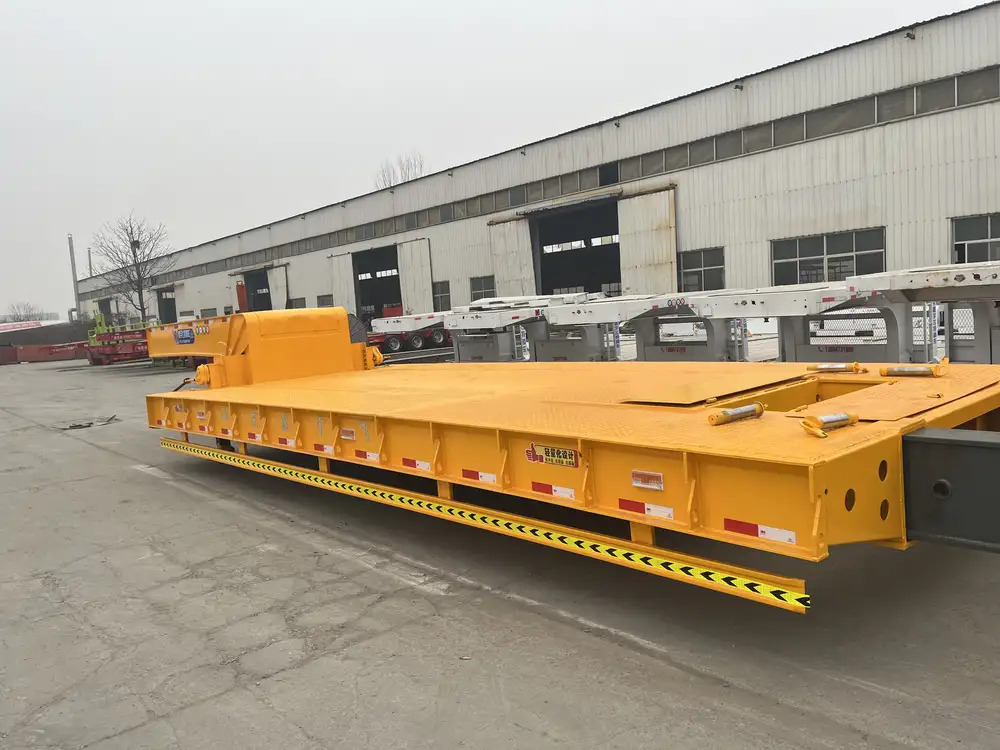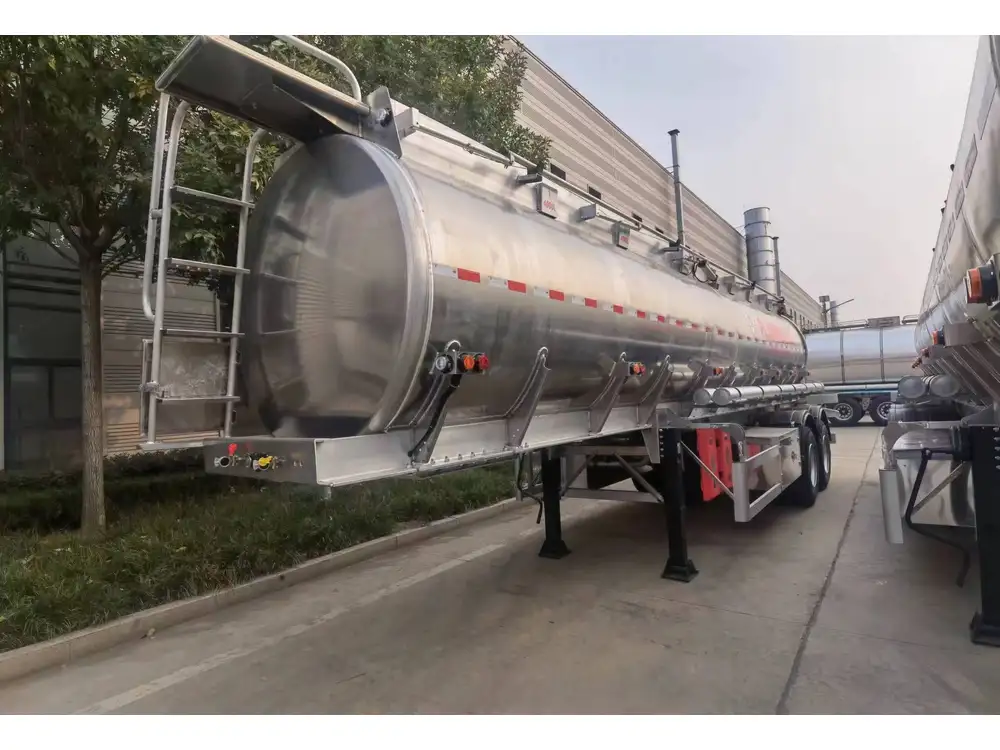Constructing your own fifth-wheel flatbed trailer is an adventurous and economically efficient venture, particularly for those who require a versatile solution for hauling heavy loads or building projects. This guide provides a detailed step-by-step approach to building a fifth-wheel flatbed trailer, ensuring that you are well-informed about the processes, materials, and considerations involved.
Understanding Fifth Wheel Flatbed Trailers
A fifth-wheel flatbed trailer combines the strengths of both flatbed trailers and fifth-wheel hitches, creating a robust platform for transporting various loads while maintaining superior maneuverability. Fifth-wheel trailers are equipped with a coupling mechanism that provides increased stability and load distribution, making them preferable for heavy-duty tasks.
Key Components of a Fifth Wheel Flatbed Trailer
To conceptualize and build your fifth-wheel flatbed trailer effectively, it’s essential to understand the key components involved:
| Component | Description |
|---|---|
| Frame | The structural skeleton of the trailer, often fabricated from steel or aluminum. |
| Deck | The flat surface where loads are placed, usually constructed with wood or metal. |
| Fifth-Wheel Coupler | The mechanism that connects the trailer to the towing vehicle, ensuring a secure connection. |
| Axles | The rotating shafts that provide support and enable mobility. |
| Wheels and Tires | Components that facilitate movement, necessitating selection based on load capacity. |
| Braking System | Essential for safety, particularly for heavy loads; may include electric or hydraulic brakes. |
| Lighting | Required for visibility and compliance with transport regulations. |

Step-by-Step Guide to Building a Fifth Wheel Flatbed Trailer
Step 1: Planning and Designing
Before touching any tools or materials, crafting a detailed design is crucial.
Consider Below Factors:
- Purpose: Define what you intend to haul (e.g., machinery, logs, equipment) and the weight limitations.
- Dimensions: Determine the desired length and width of the trailer based on your hauling requirements.
- Weight Rating: Consult the fabrication materials’ specifications to ensure your trailer meets the necessary weight ratings.
Example Design Considerations:
- Length: Most fifth-wheel flatbed trailers range from 8 to 30 feet.
- Width: A standard width of 102 inches is common, though this may vary based on state regulations.
Step 2: Gathering Materials and Tools
Equipping yourself with the right tools and materials streamlines the building process.

Tools Required:
- Welding machine (MIG or TIG)
- Angle grinder
- Drill and drill bits
- Measuring tape
- Level
- Safety gear (gloves, goggles, etc.)
- Saw (band, circular, or chop)
Materials Needed:
- Steel or aluminum beams (for the frame)
- Wood planks or steel sheets (for the deck)
- Fifth-wheel hitch assembly
- Axles and wheels (with appropriate load rating)
- Reflective tape and LED lights (for safety)
Step 3: Frame Construction
- Cut the Steel Beams: Start by measuring and cutting your steel beams to the desired lengths using a saw.
- Assemble the Frame: Lay out the cut pieces in a rectangular shape, ensuring corners are square. Use a level to confirm that they align correctly.
- Weld the Joints: Secure the frame by welding the joints. Ensure the welds are thorough for structural integrity.
- Add Cross Members: Depending on the design, add cross members at intervals along the frame for added support.
- Coat for Protection: Apply paint or a rust-inhibiting primer to shield the metal from corrosion.

Step 4: Deck Installation
- Select Decking Material: Choose between quality wood or steel plate for the trailer’s deck based on your load requirements.
- Cut and Lay Decking: Cut the decking material to fit the frame, ensuring it extends slightly beyond the frame on all sides.
- Secure the Decking: Attach the decking material using screws or weld them to the frame, depending on the material chosen.
Step 5: Install the Fifth-Wheel Coupler
- Select Location: Choose a central position on the trailer’s front where the coupler will be installed.
- Secure the Coupler: Follow the manufacturer’s instructions to attach the fifth-wheel coupler securely. Ensure that it anchors firmly to the frame, withstands torque, and allows smooth engagement with the towing vehicle.
Step 6: Install Axles and Wheels
- Measure the Axle Position: Consult your design to determine where the axles will go. Proper placement affects weight distribution and trailer stability.
- Mount Axles: Position and secure the axles under the frame, ensuring they are parallel and level.
- Install Tires: Attach the wheels to the axles using nuts and bolts, ensuring they are torqued correctly to prevent loosening while in transit.

Step 7: Braking and Lighting System
- Braking Mechanism: Install the braking system, which may involve electric brakes for ease of use. Ensure you follow the wiring instructions carefully.
- Lighting Fixtures: Attach LED lights and reflective tape according to your local regulations, providing visibility during transport.
- Examples of Required Lights:
- Tail lights
- Brake lights
- Turn signals
- Marker lights
- Examples of Required Lights:
Step 8: Final Checks and Testing
Before taking your new trailer on the road:
- Inspect Connections: Verify that all components are firmly secured.
- Test the Brakes and Lights: Conduct a functional test of the braking and lighting systems to ensure safety.
- Road Test Load Capacity: Start with a light load during initial trips to ensure stability and functionality.
Legal Considerations and Safety Compliance

Licensing and Registration
Before putting your trailer to use, check your local regulations regarding trailer registration and licensing. Most regions require trailers over a specific weight to be registered to ensure compliance with road-use standards.
Weight Distribution and Towing Regulations
Understand your vehicle’s towing capacity and adhere to the weight limits. Overloading can lead to accidents and vehicle damage.
Maintenance Tips for Longevity
To extend the lifespan of your fifth-wheel flatbed trailer, regular maintenance is crucial. Here are some essential practices:
- Periodic Inspections: Check for signs of wear, especially on the coupler, brakes, and wheels.
- Lubrication: Regularly lubricate moving parts to prevent wear.
- Rust Prevention: Inspect the frame for rust and treat or repaint as necessary.

Conclusion
Building a fifth-wheel flatbed trailer is an empowering project, combining creativity, engineering, and practicality. By following the steps outlined in this guide, you can create a sturdy and functional trailer that meets your specific hauling needs. As with any DIY project, ensure to comply with safety regulations and protocols, and celebrate your accomplishment as you take to the roads with your custom-built fifth-wheel trailer!



